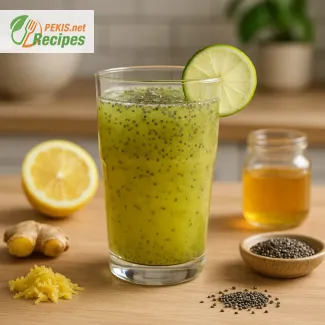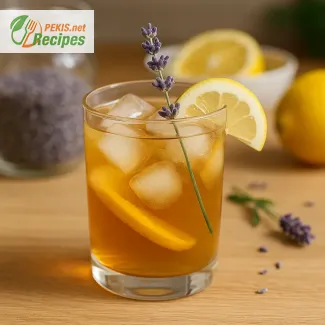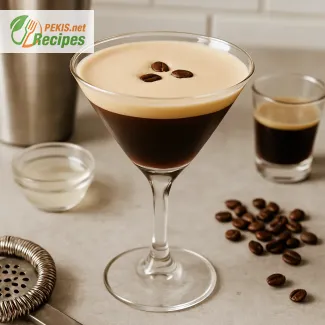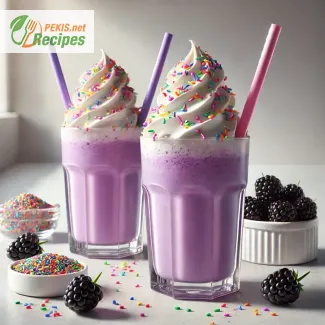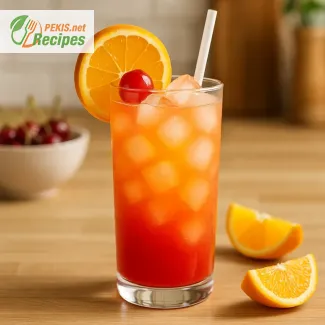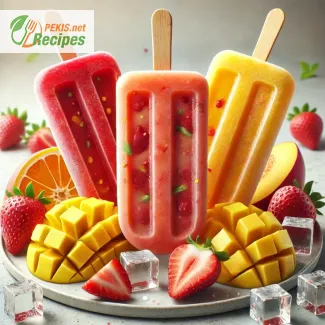
Popsicle Recipes have become a refreshing symbol of summer indulgence, enjoyed by children and adults alike. These vibrant, icy treats offer endless flavor possibilities and are an ideal way to capture fresh, fruity flavors in a fun, chilled format. Popsicles are crafted by blending natural ingredients like fruit purées, juices, or yogurt, then freezing them on sticks to create colorful, delightful snacks. Over time, they’ve evolved from simple fruit-based recipes into a broad range of varieties, including creamy, layered, and gourmet options that cater to diverse tastes and dietary needs.
1. Classic Fruit Popsicles
Classic fruit popsicles highlight the simplicity and purity of fresh fruit. Often made with pure fruit purée, these popsicles can feature a single fruit or a combination, like strawberry, watermelon, and mango. Fruit popsicles are usually blended with a little sugar or honey to balance the natural tartness. These options are not only visually appealing but are also packed with vitamins, antioxidants, and hydration from the fruit content, making them a guilt-free, nutritious snack.
2. Creamy Popsicles
Creamy popsicles introduce a luscious texture by combining milk, yogurt, or coconut milk with fruits or other flavors. The addition of dairy or non-dairy cream enhances the popsicles with a smooth, ice cream-like feel, perfect for those who crave a richer dessert. Popular choices include peaches and cream, coconut-lime, or avocado for a unique twist. For a dairy-free alternative, creamy popsicles made with almond milk or oat milk allow those with dietary restrictions to enjoy the same creamy indulgence.
3. Layered and Swirled Popsicles
Layered popsicles are true works of edible art, blending different colors and textures within one frozen treat. By layering or swirling fruit purée, yogurt, and juice, you create visually stunning popsicles that not only taste delightful but are also Instagram-worthy. Popular combinations include blueberry-lemon, strawberry-coconut, or mango-pineapple. The layered effect provides a textural experience in every bite, making these popsicles exciting for both the eyes and the taste buds.
4. Gourmet and Herbal Popsicles
Gourmet popsicles push the boundaries of the traditional popsicle by incorporating culinary herbs, exotic fruits, and spices for a unique and sophisticated taste profile. These can include lavender-infused lemonade, basil-strawberry, or mint-cucumber-lime. The addition of fresh herbs offers a refreshing twist and brings subtle aromatic flavors. Often, they’re lightly sweetened with honey or agave, allowing the natural flavors to shine. Gourmet popsicles have become especially popular at upscale events and are often served as palate cleansers between courses.
5. Alcoholic Popsicles (Poptails)
A growing trend in the popsicle world, alcoholic popsicles (often called “poptails”) combine refreshing flavors with a splash of vodka, rum, or champagne. These adult-only treats transform cocktails into frozen form, with flavors like Margarita, Piña Colada, and Sangria being crowd favorites. The alcohol content in poptails is usually low, just enough to enjoy the essence of a cocktail without significantly altering the freezing process. Perfect for summer parties, poptails add a playful and sophisticated touch to gatherings.
6. Superfood and Nutrient-Packed Popsicles
As health-conscious choices gain popularity, so too have nutrient-dense popsicles made with superfoods and nutritional supplements. Ingredients like chia seeds, acai, spirulina, and matcha elevate these popsicles to a functional snack. Superfood popsicles often incorporate green juices or smoothie ingredients, making them an ideal choice for health-conscious individuals who want a refreshing snack that also contributes to their wellness goals.
7. Decadent Chocolate Popsicles
For chocolate lovers, chocolate popsicles are an irresistible treat. Made with cocoa powder, chocolate milk, or melted dark chocolate, they satisfy a sweet tooth with a rich chocolate flavor in a cold format. Some recipes even add a touch of espresso or sea salt to deepen the taste, giving chocolate popsicles a more complex flavor. These are often garnished with nuts, chocolate chips, or coconut flakes for added crunch and texture, turning the popsicle into a dessert that could rival traditional chocolate treats.
Practical Uses of Popsicles
Popsicles serve many purposes beyond just being a refreshing snack. Due to their natural fruit and nutrient content, popsicles can be used as an easy hydration solution, especially for kids. In addition, homemade popsicles can be tailored to suit dietary preferences, whether dairy-free, low-sugar, or packed with vegetables for a hidden nutrient boost. They’re also an excellent vehicle for introducing new flavors and healthy ingredients to children or picky eaters in a fun, approachable way.
Making the Perfect Popsicle
The key to an excellent popsicle lies in balancing flavor and texture. Achieving the right sweetness, consistency, and level of flavor concentration is essential, as freezing dulls flavors slightly. Adding a bit of lemon juice or zest can brighten the taste, while a touch of salt enhances sweetness naturally. The right ratio of solids to liquids is also crucial to prevent the popsicle from becoming icy or overly hard. Generally, incorporating a small amount of sugar, honey, or syrup improves the texture, giving the popsicle a smooth bite.
Storage and Serving Tips
When stored properly, homemade popsicles can last several weeks in the freezer. However, it’s essential to keep them in airtight containers or cover them with plastic wrap to avoid freezer burn. When serving, running the popsicle mold under warm water for a few seconds helps release the popsicle smoothly, maintaining its shape and appearance. Serving popsicles on ice trays or bowls at gatherings can also prevent melting, allowing guests to enjoy them at their own pace.
In summary, popsicles are incredibly versatile, catering to both health-conscious individuals and those seeking a decadent, fun treat. Whether enjoyed as a cooling snack on a hot day or as a creative dessert, popsicles offer an experience that’s as delicious as it is visually captivating. From classic fruit and creamy concoctions to gourmet and herbal creations, there’s truly a popsicle for every palate.
Step-by-Step Preparation
- Prepare Ingredients: Rinse and trim the strawberries, then dice them and the mango into small pieces for easier blending.
- Blend the Fruits: Add the strawberries, mango, and orange juice into a blender. Blend until smooth, ensuring there are no chunks for a consistent texture. For added creaminess, you may add coconut milk or Greek yogurt at this stage.
- Sweeten and Balance: Add the honey (or agave syrup) and lemon juice to the fruit mixture. Blend again to combine. Taste and adjust sweetness or acidity as desired.
- Strain if Necessary: If you prefer a smoother texture, strain the mixture through a fine sieve to remove any pulp or seeds.
- Fill the Molds: Pour the mixture evenly into popsicle molds, filling them to the top. If using wooden sticks, insert them now. Tap the molds lightly on a surface to release any air bubbles.
- Freeze: Place the molds in the freezer and freeze for at least 4 hours or until fully set.
- Serve: Run the molds under warm water for a few seconds to release the popsicles easily. Serve immediately for the best texture and taste.
Enjoy these delicious, healthy popsicles as a refreshing treat on warm days, ideal for both children and adults looking for a natural, fruity snack!
The ingredients and nutritional values in this popsicle recipe bring numerous health benefits, making it both a refreshing treat and a nutrient-rich snack. Each component plays a unique role in supporting various bodily functions, with an emphasis on essential vitamins, fiber, and natural sugars that fuel and refresh the body without excess calories.
Impact of Nutritional Values on Health
1. Calories (85 kcal per popsicle)
At only 85 calories per serving, these popsicles are a low-calorie option, perfect for a light snack. Consuming moderate-calorie snacks helps maintain a balanced energy intake, contributing to healthy weight management and reducing the risk of obesity.
2. Carbohydrates (18 g)
Carbohydrates from fruits provide a natural source of quick energy. These simple, naturally derived sugars offer immediate fuel for the brain and muscles, especially beneficial for staying energized during warm days.
3. Fiber (1.5 g)
The fiber content, primarily from the fruits, supports digestive health by promoting regularity and preventing constipation. Fiber also helps maintain blood sugar levels by slowing sugar absorption, which keeps energy levels stable and aids in long-term metabolic health.
4. Sugar (13 g)
The 13 grams of sugar come from natural sources, mainly strawberries, mango, and orange juice, with minimal added honey or agave. Natural sugars provide energy without the spikes associated with processed sugars, making them gentler on blood sugar levels. Additionally, these sugars are combined with fiber and other nutrients, minimizing their impact on insulin spikes and energy crashes.
5. Fat (0.6 g) and Saturated Fat (0.4 g)
This recipe is naturally low in fat, especially saturated fats. For those looking to reduce fat intake, this popsicle provides a light option that doesn’t add to daily fat consumption. Low saturated fat intake supports heart health by keeping cholesterol levels balanced and promoting a healthy cardiovascular system.
6. Protein (1.2 g)
Although minimal, the protein present in this recipe (particularly if yogurt or coconut milk is used) helps repair tissues and supports overall growth. Adding protein to even a light snack like popsicles can help with satiety and prevent overeating.
Key Vitamins and Nutrients from Ingredients
1. Vitamin C (from strawberries, orange juice, and mango)
Vitamin C is a powerful antioxidant that helps strengthen the immune system, protecting against infections. Additionally, it promotes collagen production, supporting skin elasticity and wound healing. Vitamin C also aids in iron absorption, enhancing the body's ability to utilize this essential mineral.
2. Vitamin A (from mango)
Mango is rich in beta-carotene, which the body converts to Vitamin A, a vital nutrient for vision health and immune function. It also supports skin health by encouraging cell renewal and repair.
3. Vitamin E (from coconut milk)
If coconut milk is included, it adds a source of Vitamin E, an antioxidant that supports cell protection from oxidative stress. Vitamin E is also essential for skin health, helping maintain moisture levels and elasticity.
4. Potassium (from strawberries, orange juice, and mango)
Potassium is a crucial electrolyte that helps regulate fluid balance, muscle contractions, and nerve signals. Consuming potassium-rich foods, especially in warmer weather, helps maintain hydration levels, aids in blood pressure control, and supports heart health.
Additional Health Benefits of Key Ingredients
1. Strawberries
Rich in Vitamin C, fiber, and antioxidants, strawberries are beneficial for skin health, immune support, and fighting oxidative stress. Their high anthocyanin content (responsible for their red color) offers anti-inflammatory properties that contribute to heart health and lower cholesterol.
2. Mango
Known as the “king of fruits,” mangoes contain high levels of Vitamin C and A, as well as folate, which is essential for cellular growth and repair. Mangoes also contain zeaxanthin and lutein, carotenoids that protect the eyes from harmful blue light and support overall eye health.
3. Orange Juice
Orange juice not only adds natural sweetness but is also a potent source of Vitamin C and potassium. This citrus fruit is hydrating and has been shown to support heart health by improving blood vessel function. Its flavonoids, like hesperidin, have antioxidant and anti-inflammatory effects that protect cells from damage.
4. Honey or Agave Syrup
These natural sweeteners offer trace amounts of minerals and antioxidants. Honey contains small amounts of B vitamins and amino acids. Agave syrup has a lower glycemic index than sugar, which means it has a gentler impact on blood sugar, though both should be consumed in moderation to avoid excess calorie intake.
5. Coconut Milk or Greek Yogurt (Optional)
Adding coconut milk introduces healthy fats, including medium-chain triglycerides (MCTs), which can be quickly used for energy and may benefit brain function. Greek yogurt, on the other hand, brings additional protein, probiotics for gut health, and calcium, which supports bone strength and density.
Balanced Nutrition and Wellness Support
These fruit popsicles offer a refreshing way to consume vital nutrients, especially Vitamin C, A, and fiber, which support the immune system, skin health, and digestive function. They are a low-calorie, low-fat snack option that hydrates and provides antioxidants, helping combat free radicals that can lead to premature aging and cellular damage. The combination of natural sugars with fiber helps sustain energy levels, making this recipe ideal for all ages as a satisfying, healthful snack.
Given its nutrient-rich yet low-calorie profile, this popsicle recipe can be incorporated into a balanced diet as an occasional treat, especially during warmer months when hydration and lighter snacks are more suitable. Fruit-based popsicles like these are naturally low in processed sugars and fats, making them a healthier alternative to many traditional desserts.
Recommended Frequency
Ideally, enjoying these popsicles two to three times a week can provide a refreshing dose of essential vitamins without overindulging in sugar or calories. Since they’re made from whole fruits, these popsicles offer vitamins, fiber, and hydration while satisfying sweet cravings in a more nutrient-dense way than many conventional sweets. Including them occasionally helps maintain variety in the diet, ensuring a balance of nutrients from different food groups.
General Advice for This Recipe
- Opt for Fresh, Seasonal Fruits: Whenever possible, use fresh, seasonal fruits as they tend to be richer in nutrients and have more vibrant flavors. Seasonal fruits also reduce the need for additional sweeteners.
- Experiment with Nutrient-Rich Add-Ins: For an extra health boost, consider adding ingredients like chia seeds, spinach, or a dash of spirulina. These ingredients blend well into fruit mixtures and enhance the popsicle’s nutrient profile without affecting taste.
- Mindful Serving Size: While low in calories, these popsicles still contain natural sugars from fruit. Sticking to one popsicle per serving keeps portions reasonable and fits within a balanced diet.
- For Special Dietary Needs: Those with dietary restrictions or specific health goals can adjust the ingredients—using coconut milk for lactose-free or vegan options, or omitting honey/agave for a fully fruit-sweetened treat.
By treating this recipe as a fun, health-conscious snack rather than a daily dessert, you can enjoy both the flavor and the nutritional benefits without over-relying on sweet treats.
